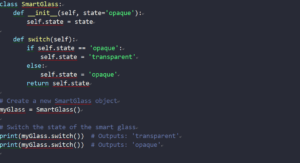Smart Laminated Glass with PDLC (Polymer Dispersed Liquid Crystal) and EVA (Ethylene-Vinyl Acetate) film is a type of high-tech glass that can shift from being transparent to opaque with the application of an electric current. This technology is used to create “smart” windows and glass partitions that can be adjusted for privacy or varying levels of light penetration, and has a wide range of applications in various industries. The PDLC technology involves a layer of liquid crystal molecules sandwiched between two conductive coating layers. When an electric current is applied, the liquid crystal molecules align, allowing light to pass through and making the glass transparent. When the current is turned off, the molecules scatter light and the glass becomes opaque. The EVA film, on the other hand, is an adhesive interlayer used in the lamination process of the smart glass. It is used to bond the layers of glass and the PDLC film together. EVA film for PDLC smart glass is specially designed to ensure high light transmittance, perfect weather resistance, and dimensional stability. Here’s a simple example of how you can use this technology:
In this Python example, a class is created to simulate the behavior of smart glass. The method changes the state of the glass from ‘opaque’ to ‘transparent’ and vice versa. Please note that this is a simplified example. In actual implementation, the switching process is controlled by an electrical system that applies or removes voltage to the PDLC layer of the glass. Smart glass technology also has environmental benefits. It reflects infrared light, reducing interior temperatures and lowering HVAC costs. Additionally, it consumes low voltage and power, making it energy efficient. The smart glass can also be controlled wirelessly via Wi-Fi, and is compatible with home automation systems like Alexa and Google Home.

